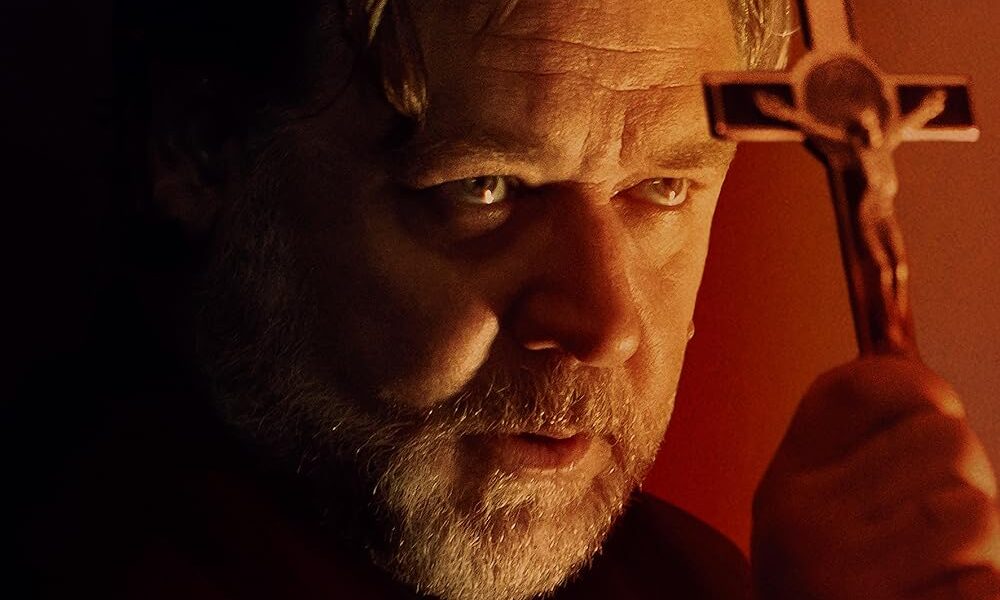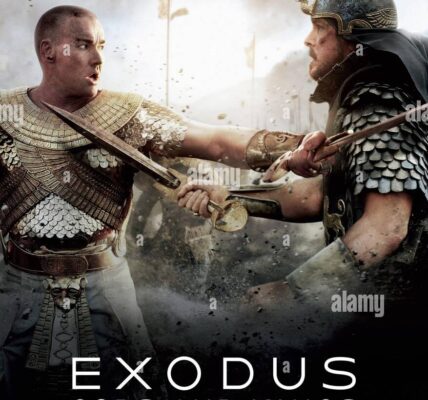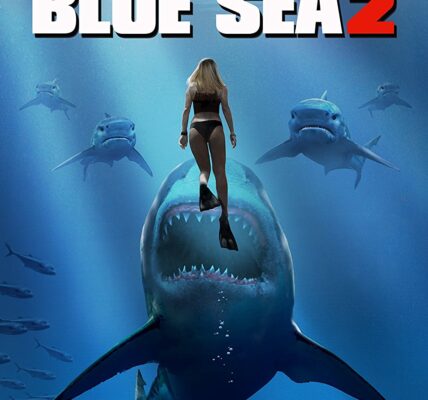1. Plot Summary
Anthony Miller (Russell Crowe) is a washed-up actor tapped to play a priest in The Georgetown Project, a remake of The Exorcist. While filming in a chilling townhouse set, Anthony’s real life—and fragile psyche—collide with the role, prompting his daughter Lee (Ryan Simpkins) to wonder: is this breakdown due to addiction relapse, unresolved trauma, or genuine demonic possession? The story unfolds across set‑days, blending inner torment with possible supernatural intrusion.
2. Notable Elements
-
Meta‑Horror Concept: The movie‑within‑a‑movie structure—“The Georgetown Project”—functions as both homage and psychological labyrinth, blurring reality and performance.
-
Russell Crowe’s Bold Turn: Crowe delivers a raw, self‑aware portrayal of a man teetering between addiction, grief, and potential possession. Many praised his vulnerable commitment, even when the script falters.
-
Cold Room Sequence: An imaginative callback to The Exorcist, the “cold room” scene uses breathy visuals to ramp up tension. Chloe Bailey’s possessed character in this scene stands out as especially chilling.
-
Tone Shifts & Scares: The first act thrives on meta commentary and character exploration, but eventually dips into familiar possession tropes, yielding some effective jumps in film’s third act.
3. Themes & Messages
-
Past Trauma & Inner Demons:
Anthony battles alcoholism, loss of his wife, and childhood clerical abuse. The question becomes—is the demon real, or psychological? This mirrors holiday themes of confronting the past before celebrating the present.Advertisement -
Art vs Reality: As his role drains him, the film asks: how much of horror comes from performing it vs. living it?
-
Faith, Guilt & Redemption: Roots in the Exorcist lore bring up intergenerational guilt, Catholic trauma, and the possibility of healing through confrontation.
4. Personal Impressions
What Worked:
-
Crowe is compelling—his self-regard and fragility anchor the film’s emotional core.
-
The “cold room” sequence is atmospherically tense and visually arresting.
-
Meta-horror premise starts strong, drawing horror fans and film buffs alike.
What Didn’t:
-
Film devolves into clichés of exorcism lore—spewed Latin, dramatic levitation—losing its self-aware edge.
-
Narrative coherence suffered post–production troubles: critics called it a patchwork with arbitrary date‑headers.
5. Audience Recommendations
-
For horror fans who appreciate The Exorcist legacy and meta-cinematic tributes, this hits familiar beats with Crowe’s gravitas.
-
For Russell Crowe followers, his daring, nuanced turn makes the film worth watching—even if the script stumbles.
-
Not for fans of tight narrative or originality—the plot’s reliance on possession clichés may disappoint.
6. Conclusion & Rating
The Exorcism is an ambitious blend of acting study, genre homage, and psychological horror. Crowe’s raw energy and standout sequences—especially the “cold room”—elevate it beyond its messy third act and sporadic clichés. It’s a compelling but uneven watch.
🔚 Final Recommendation: Watch it for Crowe’s performance and stylistic moments; skip it if you want tightly woven stories or fresh exorcism takes.
⭐️⭐️⭐☆ 3 out of 5 stars
Watch more:




